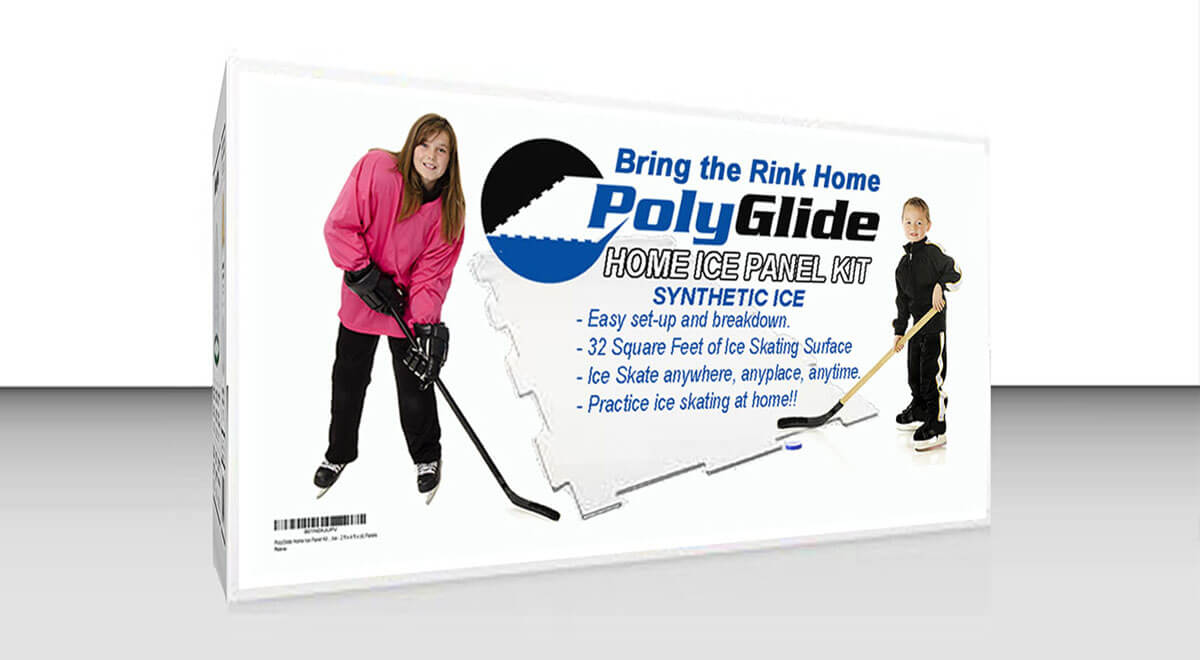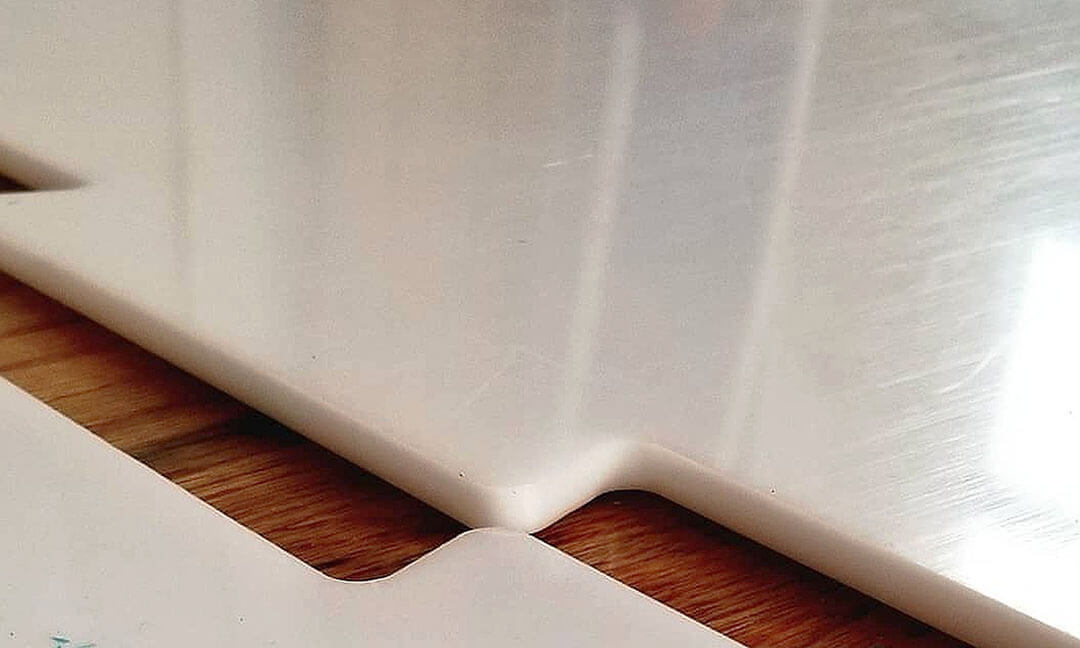Inflatable Party Rental: 5 Advantages of Adding Synthetic Ice
Parties were once a simple affair.
All you needed was good food, good music, and a great atmosphere.
Today, people looking for exciting and innovative experiences.
More and more event planners and part businesses are seeking to meet the demand, especially inflatable party rental businesses.
If you own an inflatable party rental business, you probably have all the bounce houses, slides, and other fun inflatables in your arsenal.
However, to truly stand out and meet the ever-growing expectations of customers, adding synthetic ice to your inflatable party rental business can offer several distinct advantages.
It's a way to truly serve your clients and capitalize on the millions of ice skaters looking to have fun during the Holidays.ENJOY THE LEAST AMOUNT OF SKATE BLADE FRICTION WITH POLYGLIDE SYNTHETIC ICE

Synthetic Ice as a Unique Attraction
For the uninitiated, synthetic ice are special panels that connect to form a skatable ice rink.
Each panel is made of durable polyethylene combined with other patented materials to give a smooth finish that's functional and durable for ice skate blades.
You simply measure the size of your space, purchase the necessary panels and connect them to form the rink.
Each panel has edges that allow them to connect to the other like a puzzle piece.
From there, you add rink walls and other safety accessories to complete an "ice rink" that does not need water, refrigeration, or cold temperatures to operate.
Offering synthetic ice as part of your rental business can set you apart from your competitors.
Commercial spaces like malls, hotels, and play houses often rent synthetic ice rinks for the Holdiays to attract customers.
For a business centered around events and entertainment, buying a synthetic ice rink outright to rent to others can be a long-term, lucrative venture.
While bounce houses are popular choices for party rentals, adding synthetic ice can provide a unique and exciting attraction that is sure to draw in a new niche of customers.

Making Your Inflatable Party Rental Trendy
With an inflatable party rental business, you have the opportunity to provide fun and entertainment for various events and occasions.
It also allows you to stay ahead of the competition by constantly adding new and exciting attractions to your inventory.
With a rental business, you can also capitalize on current trends and make your offerings more appealing to customers.
Moreover, you can customize your offers with different themes or characters and more.
One way to surely boost your inflatable party rental business and make it trendy is by adding synthetic ice to your inventory.
Here are five reasons why adding synthetic ice to your inflatable party rental business can be advantageous:
Reason #1: Year-round entertainment
Regardless of the weather and season, synthetic ice can surely be enjoyed by your customers and their guests year-round.
A hot summer day or a cold winter night won't stop the fun on synthetic ice.
It may also be set up either indoors or outdoors, offering flexibility and expanding your potential customer base.
In the colder months, you're less likely to get rentals for inflatable houses or slides, especially outdoors.
Synthetic ice allows your party rental business to provide entertainment during a time where spending is higher.
Reason #2: Diversification of services
For businesses to grow and thrive, there are only three options:
- Raise your prices.
- Increase the frequency which customers buy.
- Provide different services.
Offering synthetic ice as part of your inflatable party rental business adds a new dimension to your offerings.
It allows you to diversify your services and cater to a wider range of events and occasions.
From holiday parties and winter festivals to corporate team-building events and birthday celebrations, synthetic ice can be a versatile addition that appeals to various customer needs.
You'll continue to add to your bottom line as the product can last 10+ years from one investment.
Reason #3: Unique party experiences? Yes, please!
Adding synthetic ice to your inflatable party rental business can provide customers with a unique and unforgettable party experience.
You can pitch ice skating birthday parties, corporate events, product launches, and much more.
Guests will have the opportunity to skate and glide on a surface that feels like real ice, creating a fun and exciting atmosphere.
Not only will this delight children and adults alike, but it will also create lasting memories for everyone involved.
Reason #4: Rental business sustainability
Aside from the immediate benefits of attracting customers and diversifying your services, adding synthetic ice to your inflatable party rental business can contribute to its long-term sustainability.
The party rental business is competitive, with multiple options available in your city.
How can you stand out?
By offering a unique attraction like synthetic ice, you are establishing your business as innovative and adaptable to changing customer preferences.
This can help ensure that your rental business remains relevant and in demand for years to come.
Reason #5: An excellent marketing tool
Incorporating synthetic ice into your inflatable party rental business can serve as an excellent marketing tool.
By promoting your new synthetic ice offering through social media, online advertisements, and word-of-mouth, you can generate buzz and attract potential customers who are seeking a unique and exciting party experience.
Adding influencers, holding ice skating events, and attending sales expos are just some of the ways you can leverage your new rink to bring in more clients.
Furthermore, promoting the use of synthetic ice as an alternative to traditional ice for winter sports and activities can also be a valuable marketing strategy.
It highlights your business as forward-thinking and environmentally conscious, which can resonate with customers who prioritize sustainability.

Choosing the Right Synthetic Ice
Synthetic ice is an investment that can greatly benefit your inflatable party rental business.
Yet, it is crucial to choose a high-quality and durable synthetic ice product that will withstand heavy use and provide a realistic ice skating experience for your customers.
Here are some factors to consider when choosing the right synthetic ice for your rental business:
#1: Product Durability and Longevity
One of your primary considerations when choosing the right synthetic ice for your rental business should be its durability and longevity.
Remember that you would be offering the synthetic ice for rental purposes, which means it will be subject to frequent and heavy use.
Therefore, you should carefully choose a synthetic ice product that is built to withstand wear and tear, ensuring that it will last for a long time without losing its quality or functionality.
Additionally, selecting a synthetic ice product with a long lifespan will help maximize your return on investment and minimize the need for frequent replacements or repairs.
This will contribute to the sustainability of your business and reduce long-term costs.
#2: Installation and Maintenance Requirements
Another important factor to consider when choosing the right synthetic ice for your rental business is the installation and maintenance requirements.
You want to select a synthetic ice product that is relatively easy to install and maintain, as this will save you time, effort, and money in the long run.
It's best to choose a synthetic ice product that does not require extensive and complicated installation processes or special equipment.
This will allow you to quickly set up and dismantle the synthetic ice rink for each rental, making your business more efficient and profitable.
Maintenance should also be minimal, with simple cleaning and upkeep procedures that can easily be incorporated into your regular operations.
#3: A Realistic Skating Experience
In order to provide an enjoyable experience for your customers, it is important to choose a synthetic ice product that offers a realistic skating experience.
To achieve this, consider selecting a synthetic ice product that has been specifically designed and engineered to replicate the characteristics of traditional ice skating.
This includes factors such as the glide and feel of the synthetic ice surface, which should closely mimic that of real ice.
Additionally, the durability of the edges and the ability to support various skating maneuvers, such as turns and stops, are critical for creating an authentic and immersive skating experience.
Furthermore, the synthetic ice should have a high-quality interlocking system that ensures a seamless and secure connection between the panels, preventing any shifting or separation during use.

PolyGlide Ice Pro-Glide Infused Panel Is Perfect For Your Business
The good news is you don't have to search far and wide to find a synthetic ice product that meets all of these criteria.
The PolyGlide Ice Pro-Glide Infused Panel is the ideal choice for your rental business. This synthetic ice product offers several key advantages that make it perfect for your business.
Firstly, the PolyGlide Ice Pro-Glide Infused Panel is designed with ease of installation and maintenance in mind.
It features a straightforward installation process that does not require any special equipment or complicated procedures.
This allows you to quickly and efficiently set up and dismantle the synthetic ice rink for each rental, saving you valuable time and effort.
Additionally, the PolyGlide Ice Pro-Glide Infused Panel requires minimal maintenance.
Using the PolyGlide Ice Pro-Glide Infused Panel for your business will also ensure that you can provide a realistic and enjoyable skating experience for your customers, as it closely replicates the feel and glide of real ice.
Other Elements You Can Add
As you aim to provide a unique and fun experience to your customers and their partygoers, you need to provide a complete set-up that includes additional elements beyond just the synthetic ice rink itself.
Re recommend investing in other elements, such as rental skates of different sizes, protective gear and helmets.
To help beginners, you may also consider offering skating aids, such as walkers, which can help provide stability and support for those new to skating, minimizing liability and the risk of injury.
Additionally, to enhance the overall atmosphere, you can consider adding decorative elements like lighting, music, and seating areas for spectators.
By creating a comprehensive and inviting environment, you can ensure that your business stands out and provides an exceptional skating experience for all customers.

Conclusion
Your rental business can make any event truly unforgettable by offering synthetic ice skating.
Including synthetic ice in your product offerings can help your business attract more customers and stand out in the competitive market.
Not only will your customers have the opportunity to enjoy a unique and exciting activity, but they will also be able to experience the thrill of skating on a surface that closely resembles real ice.
This can be a major draw for individuals and groups looking to host special events, such as birthday parties, corporate team-building activities, or even holiday gatherings.
By providing the option for synthetic ice skating at these events, you can create a memorable and captivating atmosphere that will leave a lasting impression on your guests.
Lastly, using Poly-Gldie Ice Pro-Glide infused panels ensures that your customers will have a smooth and realistic skating experience, further adding to the enjoyment and success of any event.
























